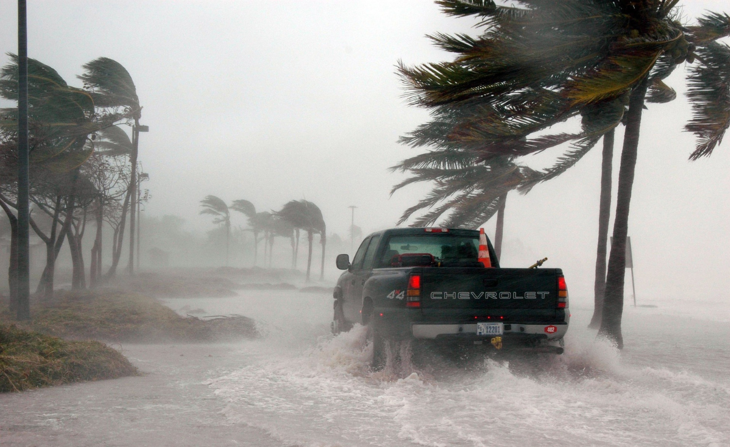 @Pixabay.
@Pixabay.
Several recent reports from the re/insurance industry have said that the 1/1 renewals period for 2023 has seen some complicated and sluggish negotiations, which could be a sign for the rest of the year’s fortunes.
In a report on the market, Gallagher Re said that there had been “a divergence between reinsurers prepared to provide clear lead terms and capacity and others who waited for firm orders in an effort to adjust terms at the last minute.”
One instance listed in the report was the situation around European property renewals, which were completed earlier than those for US clients, however, this was still much later than the previous norm – in some instances by as much as a month or two.
Insurance leaders had anticipated a messy renewals period given the effects of the war in Ukraine, the US midterms, the UK’s recent fiscal turmoil, the cost of living and energy crises on both sides of the Atlantic, Hurricane Ian, and inflation and interest rate rises all stepping up to make new deals more complicated.
Nick Hankin, Chief Underwriting Officer at QBE Insurance, told Insurance Investor in December that he anticipated high prices going into 2023, which would see insurers and reinsurers needing to plan wisely and think ahead – especially when it comes to pricing. “We expect it to reflect the high wind,” he said. “We are focusing on strong momentum and discipline, and we’ve quite conservatively managed things despite inflation.”
The reasons for the complicated renewal process had already taken a toll, especially in market lines that were previously stretched.
“While rate increases and the tightening of terms and conditions are visible across all business lines, the more pronounced impact [during the renewals] has been in areas with increased volatility and uncertainty,” said Carlos Wong-Dupuy, Senior Director at AM Best.
"Some relationships have been strained and there’s room for clients to question
the value proposition of their reinsurance programmes.”
Wong-Dupuy said that the quality of the business and bottom-line results have been critical for renewal deals in this round. “After several years of disappointing results, investor fatigue has become evident. There is a perception that for far too long primary carriers’ results may have been unfairly propped up by reinsurance support offered under too generous terms,” he said.
He added that to re-align those interests – on top of higher rates – cedants have been forced to increase retentions, reduce limits, accept more restrictive coverages, and in some cases lower ceding commissions. “Obviously, some relationships have been strained and there’s room for clients to question the value proposition of their reinsurance programmes,” said Wong-Dupuy.
Gallagher Re’s report noted that, alongside these factors, insurance-linked securities (ILS) and collateralised markets have seen few signs of new capital entering. “But lower estimates from certain clients on Hurricane Ian losses eased trapped capital concerns and helped to provide much needed additional liquidity for retrocession buyers,” it said.
Hurricane Ian in September was hugely damaging after an already volatile year. The Bermuda Monetary Authority reported that Bermudian-based re/insurers alone estimated that they will incur gross claim losses of more than $13 billion in payments to policyholders and cedants in the United States to cover the damaging effects of Hurricane Ian.
This number does not include exposure to Hurricane Ian losses covered by the majority of insurers in Bermuda’s insurance-linked securities sector.
“Despite the hardening market, it seems evident that reinsurers continue to give
priority to margins and stability rather than top-line growth.”
The Gallagher Re report also noted that the strong US dollar and the many issuances since 2020 have left ILS capital in US dollars constrained in terms of liquidity and implicated that risk spreads are widening considerably.
There was also a potential inaccuracy in modelling due to the forty-year high of inflation, which it said could remain worrisome for investors.
“Despite the hardening market, it seems evident that reinsurers continue to give priority to margins and stability rather than top-line growth,” said the report. “Once the dust is settled, there will be time to rebuild some relationships, but now underwriting discipline remains the focus.”
This year’s renewal period could provide some insights into the wider market conditions for 2023 and beyond. There are signs that inflation has peaked for now, and that some central banks will interest rate cuts, which could change the economic landscape.
“The price adjustments seen during these renewals had been strongly anticipated,” said Wong-Dupuy. “They reflect both the inability of reinsurers to meet their cost of capital during the previous six years and increased uncertainty related to natural catastrophes and geopolitical risks.”
He said AM Best believed the hardening market conditions were unlikely to be a one-off, but simply the continuation of a trend that was expected to continue at least for the next two years. “The pace of rate rises may slow down, materially in some cases, but we expect it to persist,” he added.
“We believe that underwriting discipline – mainly driven by cautious exposure
management - is here to stay for a while.”
Wong-Dupuy added that the current era of higher interest rates and the increasing concerns related to climate trends and geopolitical risks added to the need for well-established players to restore profitability to compensate for a long period of technical underperformance. However, he added that they saw a sudden influx of naïve capital – as in previous cycles – as an unlikely event.
The effect this situation will have on the balance sheets of investment teams at insurance companies could be difficult to predict in its entirety. The effects on the market, however, were easy to see as many tighten their belts.
“We believe that underwriting discipline – mainly driven by cautious exposure management - is here to stay for a while,” Wong-Dupuy said.